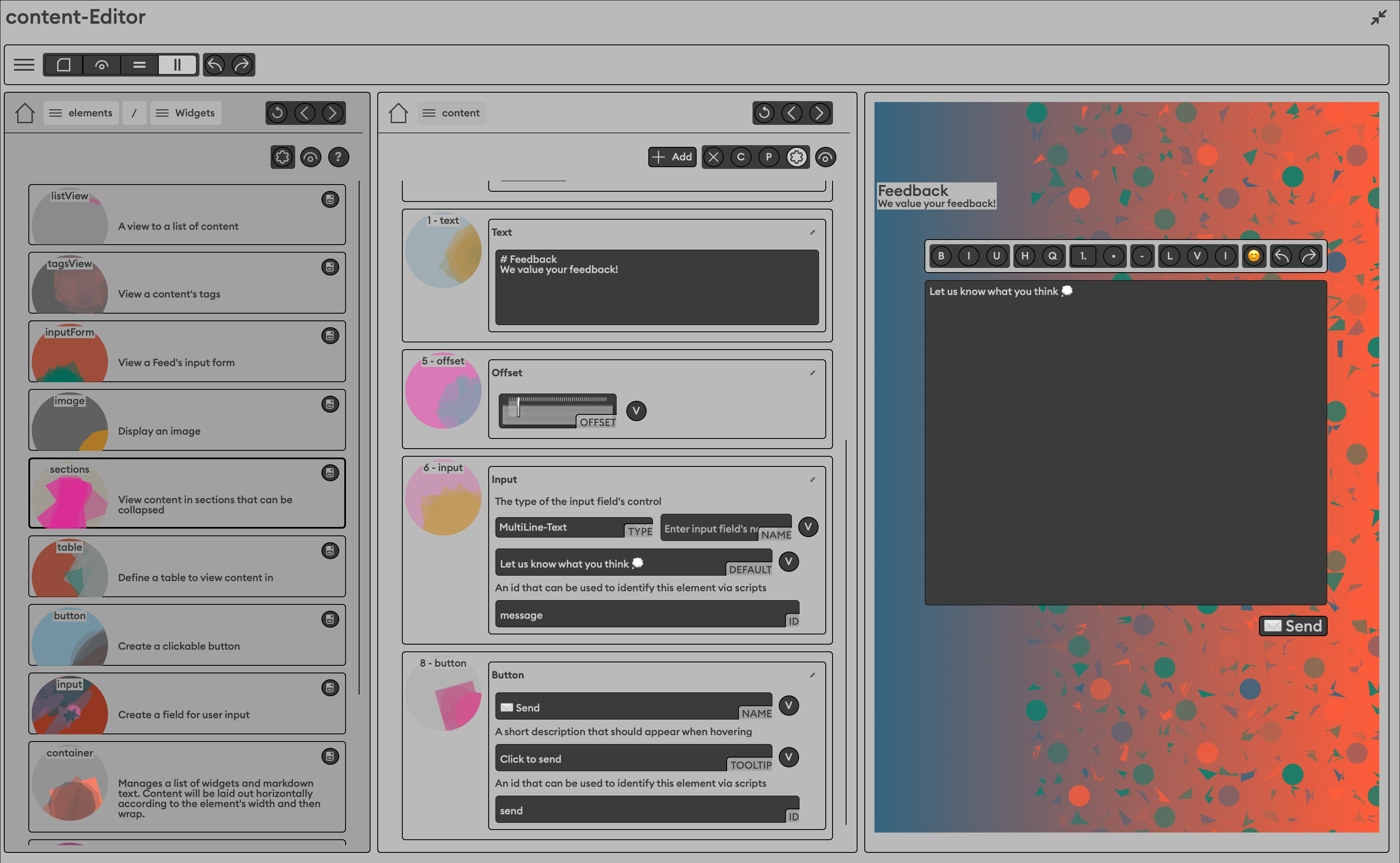Communities, no browser attached!
Allonyx is the engine that powers community features in native applications. Its modular, white-label design allows easy customization to fit a wide range of use cases. Built on a few simple yet powerful concepts, Allonyx delivers flexibility and strength in one adaptable system.

Marker-Editor
Allonyx’s powerful content editor lets you create a wide variety of content — from simple text to fully interactive pages. All of this is done through an intuitive graphical interface, with no coding required. Use it anywhere you want — for example, to build a conversation that functions like a blog, where users can publish rich, dynamic pages.
Domains
A domain is a self-contained entity that manages its own users, data, and rules. It operates independently from other domains and can be hosted anywhere. A root domain can include multiple sub-domains, each with their own data and rules. Users from the root domain can join sub-domains, with each sub-domain controlling its own membership criteria.
User-Types
User Types are fully customizable, with flexible rules for how they can be assigned. For example, a “Moderator” type might only be granted by a “Moderator-Admin,” who in turn is appointed by the “Domain Owner.” Alternatively, a “Super-Poster” type could be earned automatically after writing 100 positively rated posts, unlocking benefits like reduced costs for future posts. Yes, you can assign credit costs to posts within specific conversations as well as many other places. The system is highly adaptable—you decide what works best for your domain.
Features
Features are modular building blocks that enable core functionality within a domain. Below is an overview of the key frontend-facing features.
Users
The foundation of any community. This feature manages user registration, profile administration, notifications, account settings, content and user-type management, activity feeds, action tallies, and more.
Lists
Create and display lists of marker-editor content visible to everyone or select groups. Content can range from blogs to deeply threaded conversations, and be presented in various views such as text, labels, calendars, or custom marker-content.
Tags
Define categories and tags to organize content. Categories can be exclusive (only one tag per content) or allow multiple tags. Control which user types can see and use tags in each category. Tags used by multiple users display usage counts.
Pages
Bring content to your domain’s frontend with customizable pages. Pages support marker-content combining text, formatting, widgets, backgrounds, and featured views. You control page accessibility and permissions.
Resources
Manage binary data like images securely. Resources are encrypted locally and inaccessible outside your domain. You control how they are distributed.
Domains
Enable users to create sub-domains within your domain. Sub-domains have their own users, data, and transactions but are accessible to root-domain users with shared credits. A configurable percentage of the costs that occur in Sub-Domains transactions will be allocated to the root domain owner.
Sub-domains can be hosted on the same physical machine as the root domain or managed externally, with your domain aware of their existence and access points.
Sub-domains can be hosted on the same physical machine as the root domain or managed externally, with your domain aware of their existence and access points.
Moderation
Optionally route content and editable fields through a moderation pipeline, where moderators can review submissions before publishing.
Structured-Content
This specialized feature handles content represented as key-value pairs. You can register keys along with their value types, enabling the system to accept and process data structured around these pairs. It supports calculating prices, measuring edit distances, and managing authorship and rights. In Flexion, this feature manages presets and facilitates credit distribution among multiple authors.
Credits
Credits serve as the internal currency used to spend and earn within the system. Purchase-Credits unlock content based on access rules, while Earned-Credits are automatically granted when others unlock your content. The Credit feature is exclusive to root-domains and includes mechanisms for buying Purchase-Credits and cashing out Earned-Credits.
Voucher
Instead of charging credits directly to a purchaser's account, credits can be loaded into a Voucher. This allows purchasers to redeem credits later or gift them to others. Vouchers are also useful for marketing campaigns and special sales promotions.
Stripe
Stripe is the integrated external payment processor that facilitates converting real currencies into credits and vice versa. Set up your Stripe account to monetize your domain effortlessly.
Version
This feature manages versions of app installers and legal documents. Users receive automatic notifications when they are using outdated versions, along with prompts to update.